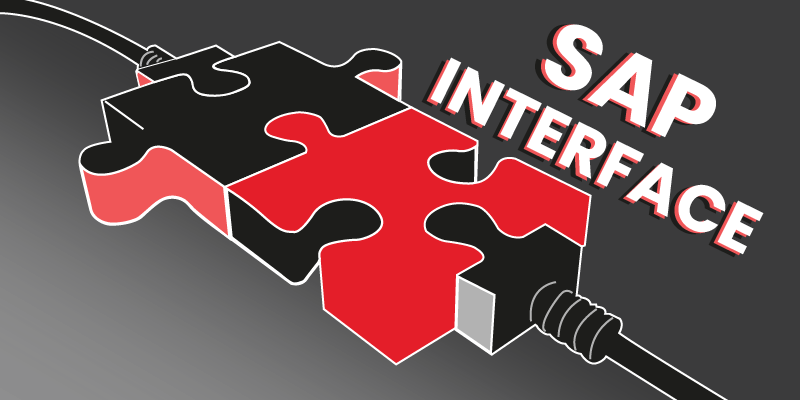
Data In Flow: SAP Interfaces And Integration
Imagine your company as a vast puzzle, composed of many individual pieces, each representing a different department. Now, all you need to do is seamlessly fit these pieces together to see the complete picture. However, crucial puzzle pieces are missing in some places. This is where (SAP) interfaces come into play. Admittedly, this is a very vivid illustration. In a less metaphorical explanation, this blog post explores what exactly an SAP interface is and why such an interface is necessary for digitization and automation.
We take a closer look at the following questions and topics:
What is an SAP interface?
SAP is one of the world’s largest software providers. Its ERP software now covers all core processes of a company—from sales and CRM to materials management, financial accounting, controlling, and human resources processes. While SAP serves as an enterprise-wide data and process platform for various applications, to fully leverage the potential of SAP data, an SAP interface is necessary. This enables the integration of the SAP system into third-party environments.
Whether it’s accounting data, financial reports, profit center invoices, etc., SAP manages all business data within a company. However, it is only through the connection to a corresponding target system that a company can process and utilize these data volumes for detailed analysis, monitoring, and control. The SAP data becomes “transparent”, providing the company with a precise overview of its financial performance. This allows for the rapid identification of deviations, using the data for critical business decisions.
In essence, an SAP interface is a connection between SAP and a third-party system. It ensures smooth communication and facilitates the exchange and processing of data. This way, companies using SAP ERP, SAP S/4HANA, or another system can seamlessly connect additional solutions to the SAP system.
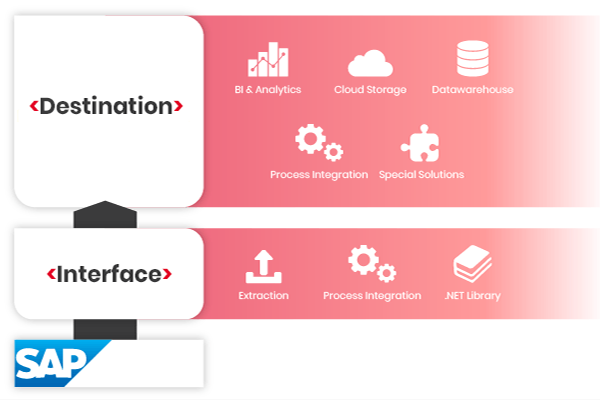
Why do we need SAP interfaces?
In many companies, there is a significant need to use SAP data in environments outside the SAP system. SAP interfaces are required to enable communication and data exchange between SAP systems and external third-party environments that do not rely on SAP technology. The interface extracts and prepares the data so that the SAP system can “understand” it. It ensures smooth collaboration between SAP and third-party systems, supporting data consistency, optimizing business processes, and increasing efficiency—a kind of digital bridge in data traffic.
For instance, companies often use specialized business intelligence and analytics tools (BI & Analytics) to gain deeper insights into business data. These tools leverage and process SAP data to create extensive reports and interactive dashboards. This allows companies to identify trends, recognize patterns, and make informed decisions.
Another crucial application is the automation of business processes such as order processes, tasks in accounting, warehouse management, and other operational workflows. By integrating SAP data into workflow and automation solutions (process integration), manual tasks can be minimized, and processes accelerated.
In addition, companies are increasingly using cloud storage solutions (Cloud Storage) and Data Warehouses (DWH) and Data Lakehouses. This allows them to collect, organize, and prepare large amounts of data from various sources for further processing. Integrating SAP data into these environments expands the possibilities, enabling more accurate analysis and reporting, as well as company-wide access to critical information.
Advantages and benefits of SAP integration at a glance:
Breaking system boundaries and data silos for consistent data:
Primarily, the goal is to dissolve data silos and use SAP data outside of SAP without the effort of double and manual data maintenance. SAP interfaces ensure a consistent data foundation in different systems. Data recorded in SAP can be automatically transferred to third-party systems in real-time without manual intervention. This reduces errors and inconsistencies, allowing companies to make crucial business decisions based on current and relevant information.
Integrated and automated business processes:
Most companies often use different software systems for various business functions, such as finance, human resources, production, and sales. SAP interfaces enable seamless integration of these systems, facilitating more efficient business processes through task automation. For example, material orders in the SAP system can be automatically forwarded to the supplier, simplifying and expediting the ordering process.
Flexibility and scalability:
SAP interfaces provide companies with the flexibility to integrate new applications or systems cost-effectively into their existing SAP infrastructure without the need to redesign the entire IT structure. This facilitates scalability and adaptation to changing business requirements.
Technologies of the most common SAP interfaces:
SAP standard interfaces and external SAP interfaces (middleware) use different technologies and methods. These are used for communication and data exchange between SAP and non-SAP systems. Here is an overview of the various SAP interface technologies and when they are used.
IDoc stands for Intermediate Document and is an SAP format for data exchange between SAP systems and external systems. IDocs are structured messages used to exchange data securely and efficiently between different applications.
RFC is an interface that enables applications to call functions and BAPIs (Business Application Programming Interfaces) in SAP systems and exchange data between the systems. This is one of the oldest and still widely used methods for integrating SAP systems. BAPIs are standardized programming interfaces of SAP business objects for communication and data exchange between SAP systems and between SAP and third-party applications.
Simple Object Access Protocol (SOAP)
SAP systems support Web Services and SOAP as a communication protocol. With Web Services, functions and data in SAP systems can be called, and data can be exchanged between various applications.
RESTful APIs (Representational State Transfer Application Programming Interfaces)
RESTful APIs are lightweight, HTTP-based interfaces often used for integrating SAP systems with web-based applications and mobile apps.
OData
OData is a protocol developed by SAP for data exchange and querying data from SAP systems. It allows easy access to SAP data through standardized HTTP requests.
SAP provides two powerful connectors to developers for integrating SAP systems with applications in other technologies. The SAP.Net Connector is specifically designed for .NET applications, while the SAP Connector enables the integration of SAP systems with Java applications. It’s worth mentioning that some external providers, such as Theobald Software with ERPConnect, offer alternatives to the SAP.Net Connector, providing developers with additional flexibility in integrating SAP into non-SAP applications.
SAP’s proprietary interface or external interface?
SAP offers its own standard interfaces to simplify data and information exchange and the integration of SAP systems with external applications. For example, the integration of external HR software is done through a standard interface to synchronize employee information such as personnel master data or salary information. These interfaces provided by SAP are standardized, allowing third-party application providers to adapt their systems to seamlessly communicate with SAP systems like SAP ERP, SAP S/4HANA, and others.
With SAP Cloud Platform Integration, SAP provides a cloud-based solution that assists companies in integrating SAP systems with cloud applications and SaaS platforms. Additionally, SAP GUI Scripting enables the automation of interactions—both recording and playback—with the SAP GUI directly from external applications.
An SAP-independent alternative to this is Theobald Software’s yunIO Transaction Feature. With this feature, any SAP transactions can be recorded, which is particularly useful for RPA scenarios where user interactions with the SAP GUI can be simulated, and transaction execution can be programmed. This makes it easy to automate recurring routine tasks and processes.
Challenges with SAP standard interfaces
However, there are situations where integration via SAP’s standard interfaces is not possible or not the best choice. This often relates to incompatibilities, for instance, when the third-party environment is not based on SAP technology and cannot smoothly interact with SAP’s standard interfaces.
Not all destination systems are equally adaptable to integration via SAP’s standard interfaces, especially when specific business requirements go beyond the standard functionality of SAP. A good example is when a company uses a dedicated process for order processing that is not covered by SAP’s standard interfaces.
In such cases, adjustments to the standard interfaces are necessary, such as special extensions or modifications. To ensure compatibility with the latest system versions, updates and upgrades may be required in both the SAP system and the third-party environment.
Moreover, user requirements can change over time, necessitating further adjustments to the standard interfaces to meet new requirements regarding user-friendliness, functionality, or the integration of additional systems. The result: a high long-term maintenance effort.
Why and when is an external SAP interface beneficial?
In these cases, the use of external interfaces (middleware), such as those offered by Theobald Software , may be necessary. External SAP interfaces are often more versatile and flexible. They can easily, quickly, and seamlessly integrate a variety of third-party applications into an existing IT infrastructure and SAP systems. They provide special features for connecting various target systems such as databases, BI and analytics tools, and cloud solutions. Additionally, mass data from SAP can be extracted and processed.
Experienced, long-standing SAP partners have extensive technical expertise in SAP technology and integration. Furthermore, these external interfaces often rely on SAP-certified technologies, ensuring seamless integration with various SAP systems.
Certification ensures that the interfaces comply with SAP’s strict quality requirements, ensuring security, stability, and performance. This is crucial to minimize the risk of compatibility issues and unexpected outages. External SAP interfaces can thus be better integrated into existing infrastructures, making implementation, maintenance, and validation easier. The use of certified interfaces is strongly recommended.
External SAP interfaces also offer various licensing models that are usually more cost-effective than SAP’s proprietary solutions. This is particularly advantageous for medium-sized enterprises and corporations with specific requirements.
The decision between SAP’s proprietary standard interfaces and external interfaces ultimately depends on various factors, including a company’s individual requirements, goals, and IT infrastructure. However, external SAP interfaces can be a powerful option, especially when flexible, easy-to-implement, and cost-effective integration is required.
Are you planning an SAP integration project and looking for a suitable interface solution? Would you like to learn more about how SAP interfaces can improve your business processes? We are happy to assist with your questions or provide a non-binding consultation.

Denise Brüggemann
Denise is Marketing Manager at Theobald Software, with a passion for targeted content creation and communication. Whether in the form of blog posts, website texts, social media or offline content - she knows how to inspire our target groups with relevant content about SAP integration and SAP process automation.
One Comment
Leave A Comment Cancel reply
More relevant posts
Microsoft Fabric & Open Mirroring: Efficient SAP Data Integration Without ODP
Companies that rely on SAP data for analytics are facing a new challenge: SAP Note 3255746 limits the use of the ODP connector, prompting many to search for alternative [...]
ABAP Programming vs. Third-Party SAP Extractors: Which Approach is Right for Your SAP Data Strategy?
When it comes to SAP data integration, two primary approaches stand out: ABAP programming and Third-Party SAP Extractors. For developers and IT decision-makers, choosing the right method is crucial for [...]
Introducing the New Theobald Software HelpCenter: Your Ultimate Resource Hub
At Theobald Software, we know how important it is to not only provide top-tier, and reliable software but also clear and accessible information to support our customers and partners. [...]
Guidance on SAP Note 3255746 for Theobald Software Xtract Products
The updated SAP Note 3255746 causes significant concern among our customers and partners. The new policy states that the use of RFC modules of the Operational Data Provisioning (ODP) [...]
Efficient SAP Data Integration with Amazon Redshift & Amazon S3
In the field of cloud data management, Amazon Web Services (AWS) offers a variety of storage and analytics solutions. Two of the most important services in this area are [...]
Data Replication With Change Data Capture and Operational Data Provisioning
CDC, ODP, ETL and SAP SLT – this string of acronyms sounds almost like it’s from the chorus of a German hip-hop song. However, there is no music behind [...]
Resolving Low Data Value Issues In SAP Systems
The software manufacturer SAP is undoubtedly one of the market leaders in the field of enterprise software. Thousands of companies worldwide rely on SAP technology to plan, execute, and [...]


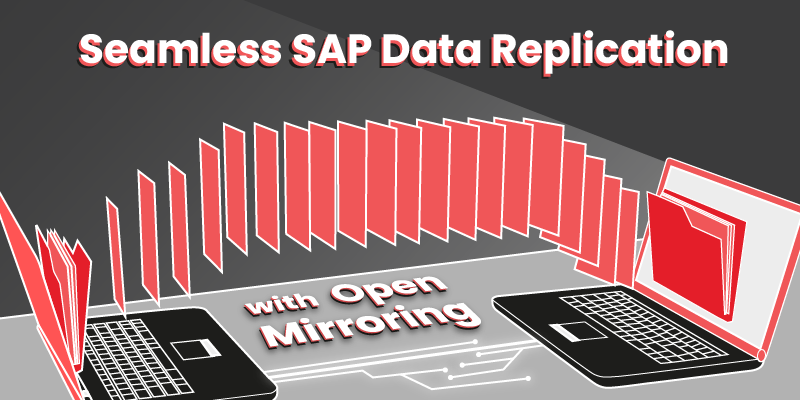
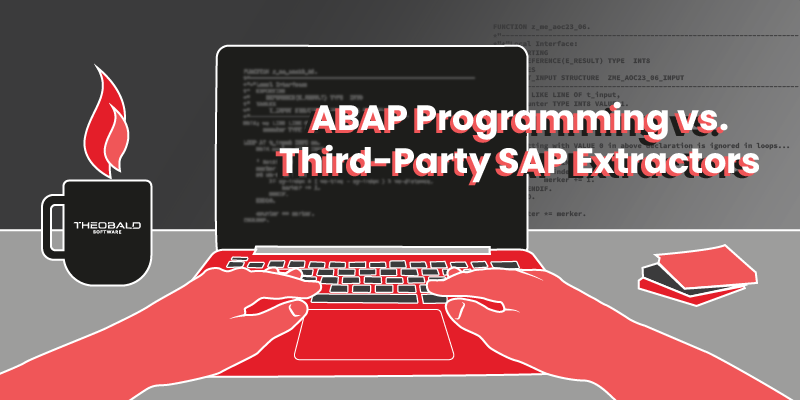
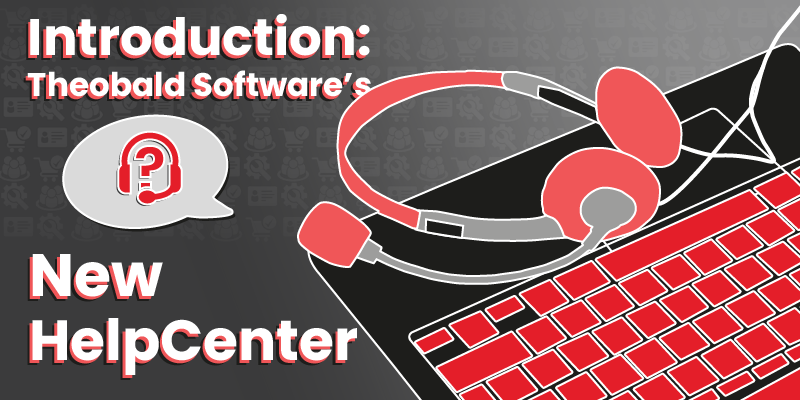
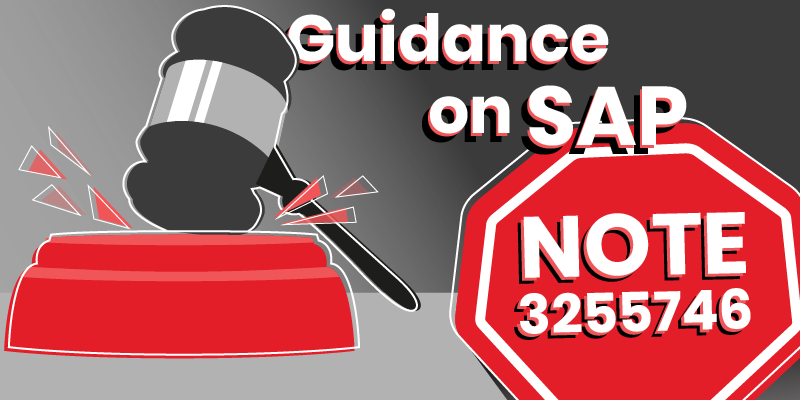
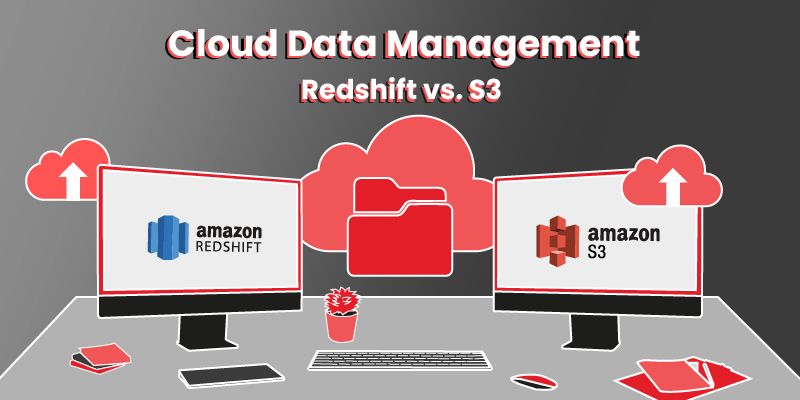
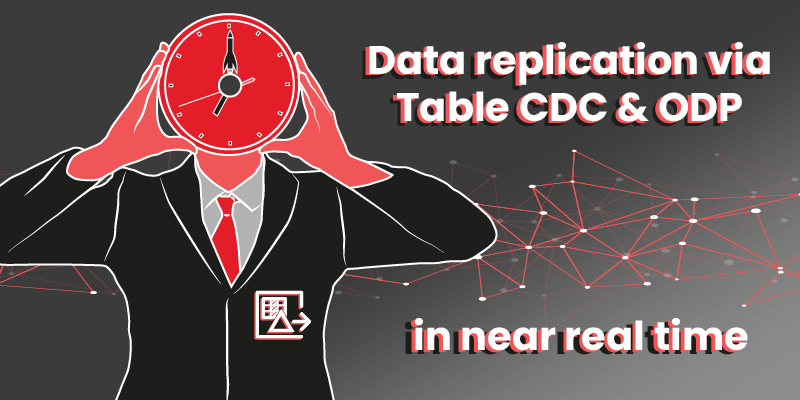
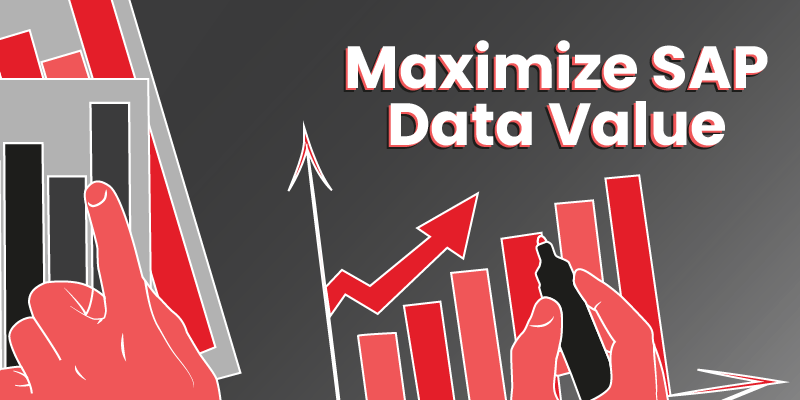


Excellent insights on SAP integration! The blog clearly explains seamless data flow and interface solutions. Informative and well-presented